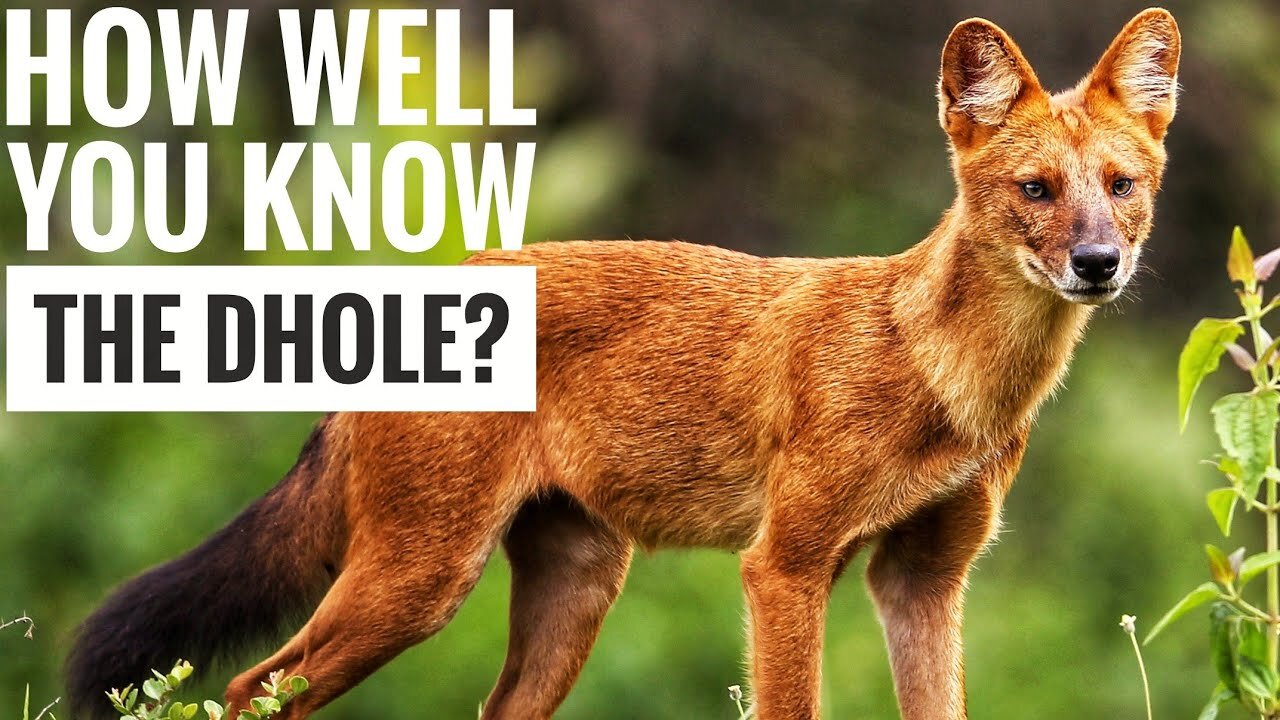Premium Only Content

Dhole || Description, Characteristics and Facts!
Dhole: Description, Characteristics, and Facts
The dhole (Cuon alpinus), also known as the Asiatic wild dog, Indian wild dog, or red dog, is a canid native to Central, South, and Southeast Asia. It is a highly social and intelligent predator, often likened to the gray wolf in its behavior and social structure, but distinguished by several unique characteristics.
Description
The dhole is a medium-sized canid with a distinct reddish coat, though its fur can range from sandy beige to a deep rust red, depending on the region. It has a bushy black-tipped tail, a pointed face, and large, rounded ears. Dholes typically weigh between 12 to 20 kilograms (26 to 44 pounds) and stand about 50 centimeters (20 inches) at the shoulder.
Characteristics
Social Structure: Dholes are pack animals, living in groups that can range from 5 to 12 individuals, though larger packs have been recorded. Pack dynamics are highly cooperative, especially in hunting and raising pups.
Hunting and Diet: Unlike other canids, dholes are known for their unique hunting strategies. They often hunt in packs, using a combination of endurance and strategic coordination to take down prey much larger than themselves, such as deer and wild boar. They also have a distinctive whistle call to communicate while hunting.
Communication: Dholes utilize a wide range of vocalizations, including whistles, screams, and clucks, which are used to coordinate during hunts and maintain pack cohesion.
Adaptability: Dholes are highly adaptable animals, capable of living in diverse habitats including tropical forests, grasslands, alpine regions, and even arid scrublands. However, they prefer dense forested areas where they can find ample cover and prey.
Reproduction: The breeding season typically occurs between October and January. Females give birth to litters of 4 to 6 pups after a gestation period of about 60 to 62 days. The entire pack participates in caring for the young, a practice known as alloparenting.
Facts
Endangered Status: The International Union for Conservation of Nature (IUCN) lists the dhole as Endangered, primarily due to habitat loss, depletion of prey base, and disease.
Cultural Significance: Dholes have various roles in the folklore and mythology of different Asian cultures, often depicted as symbols of wilderness and freedom.
Scientific Interest: Dholes are of great interest to researchers due to their complex social structures and unique vocalizations, which offer insights into canid communication and behavior.
Hashtags
#Dhole #AsiaticWildDog #EndangeredSpecies #WildlifeConservation #Canid #Predators #AnimalBehavior #Wildlife #Nature #Biodiversity #Ecology #AnimalKingdom #ConservationEfforts #WildDogs #AsianWildlife
The dhole is a fascinating and vital part of the ecosystems in which it resides, and efforts to protect this species are crucial for maintaining ecological balance and biodiversity.
-
 14:18
14:18
Actual Justice Warrior
3 days agoBody Camera Video DESTROYS BLM Hoax
2.13K14 -
 21:17
21:17
itsSeanDaniel
1 day agoCNN Host's Vaccine Lies BACKFIRE in Front of MAGA Doctor
2.76K8 -
 1:00:48
1:00:48
Dialogue works
23 hours ago $0.84 earnedMark Sleboda: Putin DROPS a Bombshell on Trump… as China & India Shake the World!
13.3K4 -
 8:03
8:03
MattMorseTV
16 hours ago $7.39 earnedTrump just GAVE THE ORDER.
52.2K40 -
 11:23
11:23
Nikko Ortiz
15 hours agoArmy Tik Tok Fails Go Hard
7.78K1 -
 2:04:38
2:04:38
Side Scrollers Podcast
19 hours agoEveryone HATES Baseball Karen + Gaming’s Newest Virtue Signal + MORE | Side Scrollers Live
31.8K7 -
 1:13:08
1:13:08
The HotSeat
15 hours agoWhen Local Authorities Won’t Act, the Feds Will
10.8K16 -
 15:13
15:13
The Pascal Show
11 hours ago $1.09 earnedHE LIED?! Trump In Hot Water After Lewd Epstein Birthday Card Released By Oversight Committee
11.4K27 -
 LIVE
LIVE
Lofi Girl
2 years agoSynthwave Radio 🌌 - beats to chill/game to
253 watching -
 14:47
14:47
GritsGG
8 days agoRumble Tournament Dubular! Rebirth Island Custom Tournament!
114K6